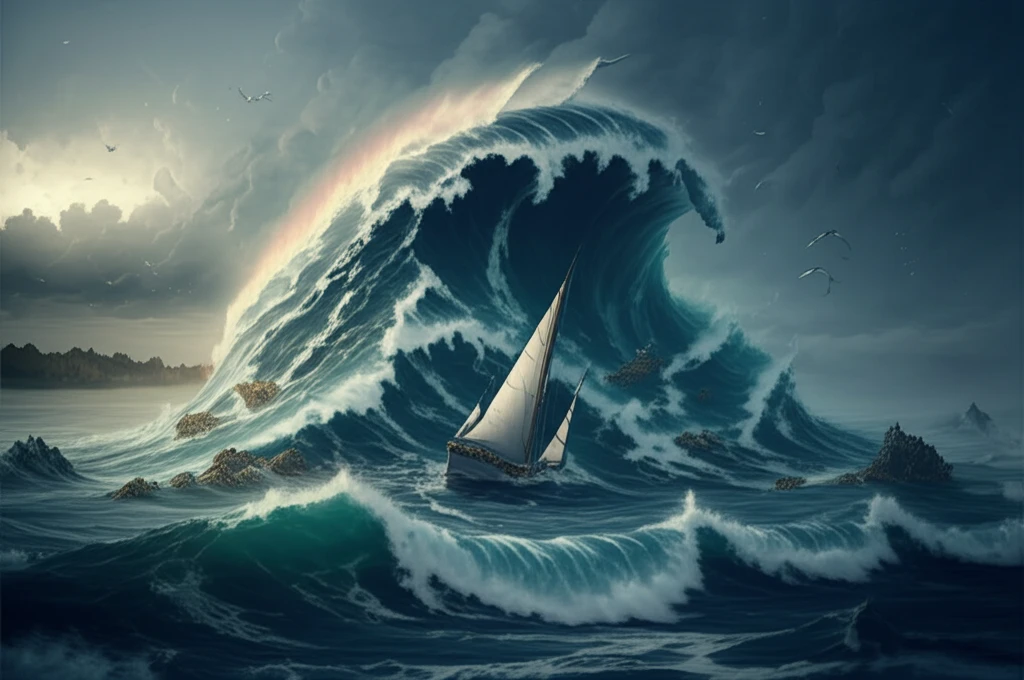
Freak Waves: Separating Myth from Marine Reality
"Uncover the science behind freak waves and how they impact coastal safety in Arraial do Cabo, Brazil."
For centuries, tales of monstrous waves emerging from seemingly nowhere have been part of maritime lore. These so-called "freak waves," or "rogue waves," were often dismissed as sailor's yarns until scientific evidence began to surface. Unlike typical waves generated by consistent winds, freak waves are characterized by their unexpected appearance and immense size, far exceeding the predicted maximum wave height for a given sea state.
These ocean giants pose a significant threat to ships and coastal structures. Their sheer force can cause catastrophic damage, leading to vessel capsizing or structural failure. Understanding the mechanisms behind their formation and predicting their occurrence is crucial for maritime safety and coastal engineering.
While various theories attempt to explain the generation of freak waves, including wave amplification by currents, temporal and spatial focusing, and nonlinear instabilities, a single unifying mechanism remains elusive. A recent study focusing on wave data collected off the coast of Arraial do Cabo, Brazil, offers valuable insights into the characteristics and occurrence of these enigmatic phenomena in a less-studied region.
Decoding Freak Waves: What Makes Them Different?

The study, conducted by Rogério Neder Candella and Mariana Viviani Candella, analyzed over 17,000 wave records (approximately 3 million individual waves) collected by a wave buoy anchored near Arraial do Cabo between 1998 and 2005. The aim was to identify and characterize freak waves based on established criteria found in scientific literature.
- Abnormality Index: This compares the height of the individual wave to the significant wave height (average height of the highest one-third of waves). A wave is considered abnormal if its height significantly exceeds twice the significant wave height.
- Crest Amplification Index: This looks at the ratio of the wave crest height to the significant wave height. Freak waves tend to have disproportionately high crests.
- Minimum Significant Wave Height: This ensures that the analysis focuses on more energetic sea states, filtering out smaller waves that might skew the results.
Unraveling the Mysteries: What Does This Mean?
While the Arraial do Cabo study identified only two freak wave events within the analyzed period, it underscores the importance of continued monitoring and research. The fact that these waves occurred outside of peak storm seasons highlights the unpredictable nature of these phenomena and the need for robust detection and prediction systems. Continued observations and analysis are vital for improved coastal safety measures and a deeper understanding of the complex forces that govern our oceans.
